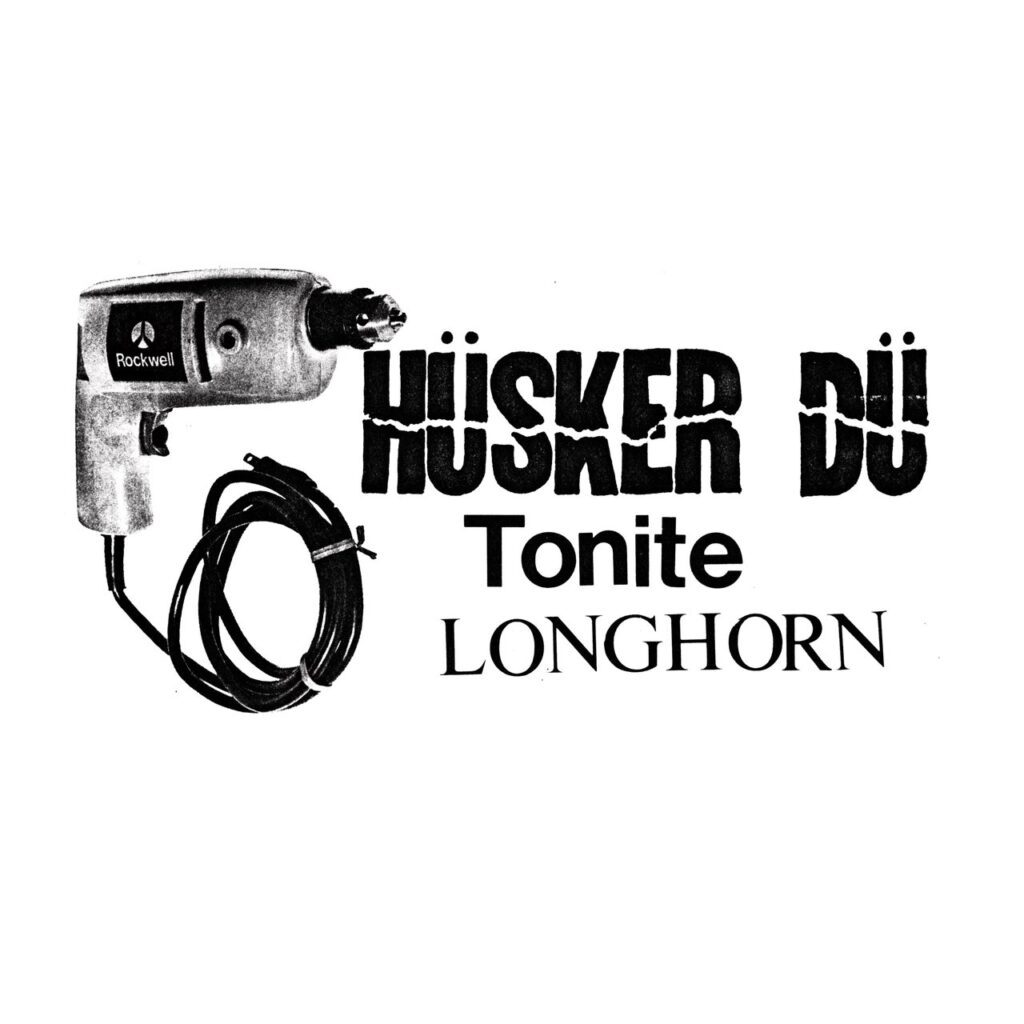By the end of the 1970s, disco was dying, and the Twin Cities were at the dawn of a renaissance. Freeform radio had given way to commercial programming, but in Minneapolis and St. Paul, a punk and new wave scene was taking shape, growing by word of mouth and metastasizing in record shops like Oar Folkjokeopus and clubs like Jay’s Longhorn. When the young trio of Bob Mould, Grant Hart, and Greg Norton played there for the first time, the scene was nascent—First Avenue’s hallowed 7th Street Entry was still the coat closet for the disco club Uncle Sam’s. But those early Hüsker Dü sets at the Longhorn revealed a group quickly becoming fluent in punk and hardcore, foreshadowing a future in which their mastery of hooks and harmonies would transcend genre. It was the first time they’d felt like the real thing.
Tonite Longhorn collects three of those early shows recorded between July 1979 and September 1980, as the band immersed itself in the breakneck thrash that would become the foundation of its sound. They were recorded by engineer and archivist Terry Katzman, who co-founded Reflex Records with Hüsker Dü after their first single was rejected by Jay’s Longhorn DJ Peter Jesperson’s label Twin/Tone. Katzman’s massive trove of Hüsker Dü recordings made up the bulk of the 2017 box set Savage Young Dü, a 69-track collection of mostly live and previously unreleased music from ’79-’82. Alternate versions of most of the songs on Tonite Longhorn can also be found on Savage Young Dü, rendering this collection largely inessential for all but the most obsessive fans. But while the 2017 set serves as a completist’s document of their early years, Tonite Longhorn is more focused, an even rawer snapshot of the young band in flux, brimming with confidence and hopped up on speed.
Much like the Savage Young Dü recordings, the tapes are a bit rough; Norton’s bass often gets lost in the mix, and the vocals sound very much like they were recorded in a makeshift rock club in the ’70s. But the drums and cymbals cut through like gunshots and lightning, and the deeper you get the more the lo-fi analog aesthetic becomes transportive, making it easier to picture a 20-year-old Mould spewing vitriol into a mic from the stage of a former steakhouse that once hosted progressive jazz. The only exact duplicate that Norton—who produced Tonite Longhorn—included from Savage Young Dü is the opener “Insects Rule the World,” the first song from their first set at the Longhorn, and arguably the moment that defines their POV in this era. “We’re not the most professional band in the Twin Cities,” Hart admits as the song comes to a close, before Mould chimes in: “…but we have fun though.”
And for the most part, these shows do sound like fun, whether they’re taking potshots at Reagan (“Uncle Ron”) or getting drugs from the professor and fucking Ginger “underneath a big palm tree” on “Gilligan’s Island.” They’re spraying jet fuel on sounds they had already heard (their amped-up cover of Dee Dee Ramone’s ode to heroin “Chinese Rocks” offers a clue to their proclivities), but they flash glimpses of how they would later transform those sounds, like when Mould turbocharges the MC5’s proto-punk fuzz box on “Sexual Economics.” This is clearly not the same band that moved to California and cut the double LP concept album Zen Arcade—but these shows offer the first part to the roadmap of how they got there.
With the exception of the prescient improvisation “Ode to Bode,” which Hart would later rework for Zen Arcade’s “Hare Krsna,” all of the songs on Tonite Longhorn appear elsewhere. But despite the redundancy, the record is an important piece of the Twin Cities’ musical archive, a rare slice of life from a short-lived heyday that fizzled out by the end of the ’80s. The Jay’s Longhorn era was brief but influential—some called it the Minneapolis CBGB—and it was one of the few places in the Midwest booking punk and new wave acts. When doors opened in summer 1977, most clubs in town booked cover bands. The Longhorn played host to the likes of Elvis Costello, Talking Heads, Blondie, the Police, and the B-52’s well before they became household names. The Ramones, the Buzzcocks, Iggy Pop, and Gang of Four played there; after the Replacements played an early show at the club in July 1980, Jesperson promptly signed them. By the time the venue closed in the spring of ’82, the Mats and Hüsker Dü were stalwart members of a thriving scene, and the crowd had moved downtown to 7th Street Entry. But much of it started at the Longhorn.
The recordings of the shows on Tonite Longhorn capture Hüsker Dü as they merge punk and hardcore, but before they moved out west and eclipsed it with a stunning run of albums—Zen Arcade (1984), New Day Rising (1985), Flip Your Wig (1985), and Candy Apple Grey (1986)—that rewrote the rules of what a hardcore punk band could be. For Mould, at least, that July 6, 1979 show marked the band’s true beginning: “Hüsker Dü was now an actual band, and we’d played a show at the Longhorn,” he recounted in his 2011 autobiography. This particular moment of the band’s infancy is unlikely to mint many new fans, but as a document of perhaps the most fertile period in Twin Cities music history, its significance is undeniable. These shows were foundational to the band’s view of its own legitimacy, a statement of arrival from a bunch of kids with a lot more to say.
All products featured on Pitchfork are independently selected by our editors. However, when you buy something through our retail links, we may earn an affiliate commission.

